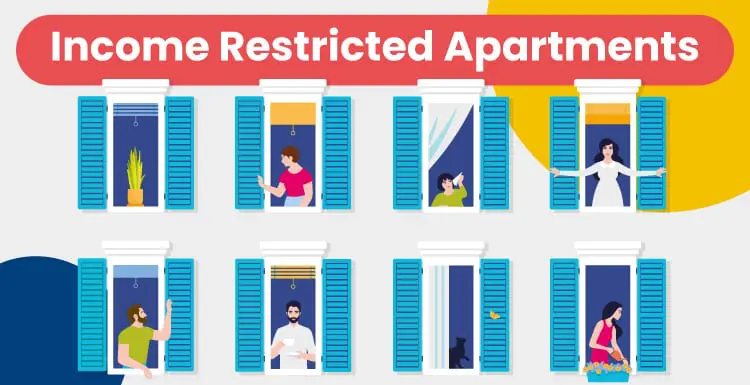In big cities where housing is prohibitively expensive, would-be residents can find refuge from high prices through income restricted apartments.
Income restricted apartments are also called low-income apartments, income-based apartments, affordable housing, public housing, and income-limited apartments.
These are small living spaces that are available to renters with low incomes relative to their area.
Apartments that offer housing options for people with low incomes are considered income restricted apartments. This threshold is usually less than 50% of the area’s average income.
Public vs Private Housing
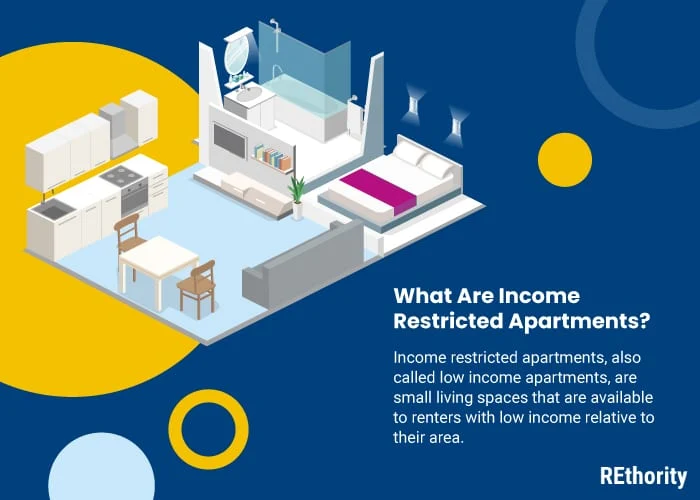
There are two types of income restricted apartments: those offered by the Public Housing Authority (PHA) and privately owned apartments. These also include the Section 8 voucher program.
This allows low-income renters to find local property that they value. They then issue vouchers that pay part or all of each month’s rent. You may find several apartment types that are income-based.
One, two, and three-bedroom apartments, garden or park apartments, townhomes, and senior apartments are examples.
Average income and cost of living vary by area, so someone living in San Francisco may meet the low income requirement by making $62,000 per year.
Conversely, someone in Nashville would be considered low-income if they made $30,000 per year. The number of people living with the family also raises or lowers this income threshold.
Someone living alone will have a much lower income cap than a family of 6.
Types of Affordable Housing
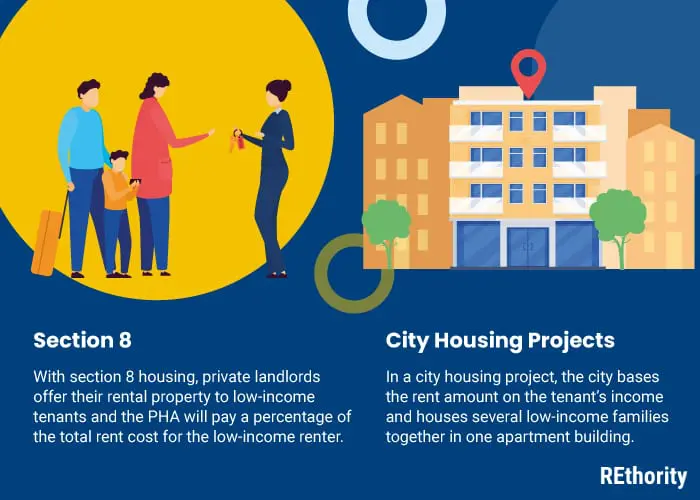
The Public Housing Authority (PHA) runs your local affordable housing programs under the U.S. Department of Housing and Urban Development (HUD).
HUD is responsible for finding the area median income and where the poverty line is in a region. These are the standards on which low-income apartment requirements are based.
It’s up to HUD to find a fair average amount of income and determine the point at which an applicant qualifies for Section 8, public housing, or privately owned low-income apartments.
Section 8
Affordable housing is offered either directly by the city or by private owners that meet government requirements.
With Section 8 housing, private landlords offer their rental property to low-income tenants, and the PHA will pay a percentage of the total rent cost for the low-income renter.
To put things in perspective, that’s like a $900/month home going down to $630/month. You have to get a voucher to apply for Section 8 housing, and you are responsible for finding your own place to rent.
Section 8 vouchers can cover all types of property, as long as the landlord accepts them. Eligible properties may include a new home, older rental, apartment, cabin, mobile home, etc.
Private owners may rent both income-based and non-income-based apartments in the same buildings or apartment complexes. They accept a lower rent amount from qualified low-income families.
Why? Because they get a federal tax credit (also known as a subsidy) from the state to make up the difference. Utilities may or may not be included with the rent in these apartments.
City Housing Projects
City-owned income restricted apartment complexes (public housing) do not have private landlords or non-income tenants at all.
Instead, the city bases the rent amount on the tenant’s income and houses several low-income families together in one apartment building.
Housing costs are usually lowest in these complexes, though they are typically not very nice. In pop culture, these are known as “projects” and are often poorly maintained due to budget constraints.
Qualifying for Income Restricted Apartments
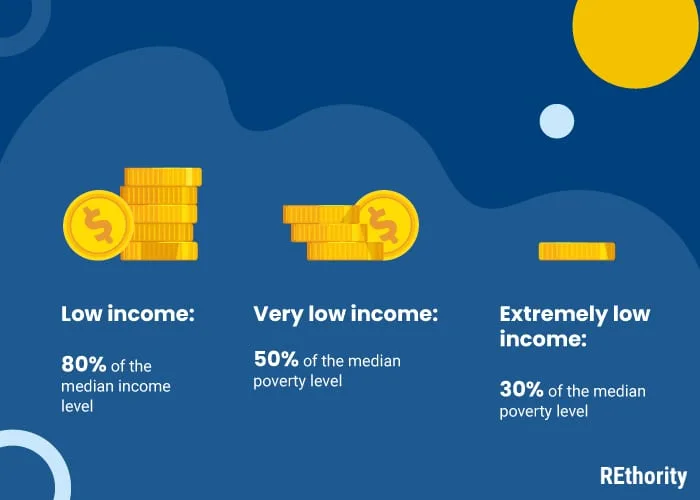
To know whether or not you are quality, you’ll need to determine whether or not you meet the low-income requirements.
Contact your local PHA to find out exactly how much you are allowed to make per year.
Also, learn what apartments are currently available. In most states, the requirements and information a renter must provide to qualify are as follows:
- Low income: 80% of the median income level
- Very low income: 50% of the median poverty level
- Extremely low income: 30% of the median poverty level
Other factors include:
- How many household or family members
- U.S. citizenship status
- Eviction history
You don’t have to be considered “very low income” or “extremely low income” to qualify in most states.
The number of people living in your household also makes a difference. Although you may doubt whether or not you qualify, it’s wise to apply anyway.
If you do meet the requirements and enrollment is open at the time, you will be able to apply for an income-restricted apartment. If you are approved, you will be assigned a PHA caseworker.
Once approved, they’ll help you every step of the way. You may be put on a waiting list if no eligible apartments are available right away. You may also be placed on a waiting list if enrollment is closed when you apply.
Enrollment opens and closes on a case-by-case basis as housing becomes available. So there isn’t always much notice given. It’s wise to submit an application, even if it can’t be processed yet due to closed enrollment.
Your application will be processed ahead of time the next time enrollment opens up.
If you already have an application that was submitted but not processed, that application will be a priority over others who have not signed up yet. When enrollment opens in the future, you will be contacted to make sure your application is still up to date. -State Eligibility Guide
The application process varies by state, but one great example is New York’s Affordable Housing Lottery. The process is complicated, but the folks at NYC Housing made a great video to help walk you through the process.
This process is pretty standard regardless of location, so make sure to watch this video from start to finish to ensure you know the ins and outs of what low-income housing landlords will likely need.
The Importance of Low Income Housing
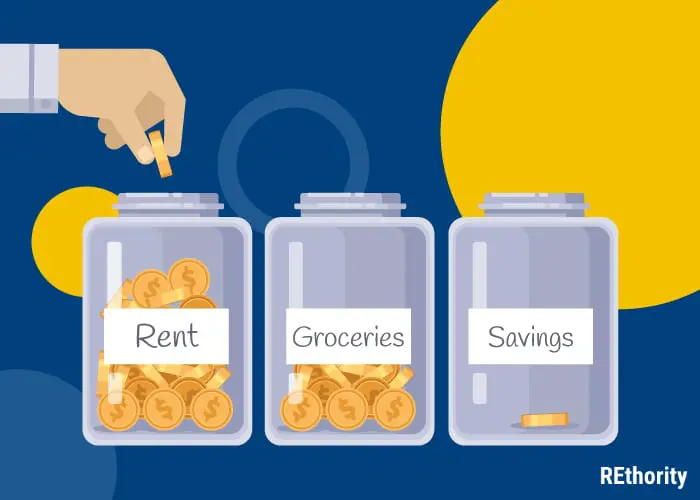
The Office of Policy Development and Research (PD&R) found that people spend about 30% of their gross income to pay rent.
Even if you’re making close to the average income in expensive areas—and many people aren’t—there isn’t much money left over after paying rent because of the high cost of living.
Millions of families across the U.S. are considered low-income and need help paying for housing. As rent costs keep rising, many workers are unable to cover basic living costs like rent and groceries.
Those with larger families have an even harder time providing these basic necessities for their households.
Programs and departments like the Public Housing Authority make it possible for low-income families to find budget-friendly housing that is safe.
It also lets them find homes located close to jobs and schools—a place they can be proud to call home. To learn more about income-based housing and how you can qualify, check out HUD.gov.

